Are you trying to crack the Pinterest for eCommerce code for your business?
You're not alone.
While most platforms encourage you to dance on camera or chase viral moments, Pinterest offers something fundamentally different—a visual discovery platform where over 537 million monthly active users are actively planning purchases.
As a leading digital Pinterest marketing for eCommerce and SaaS brands, Roketto has developed proven strategies that leverage Pinterest's unique advantages to drive sales growth.
The data speaks for itself: Pinterest users have 85% larger shopping baskets than other platforms, and 96% of searches being unbranded creates massive opportunities for businesses like yours.
TLDR: Your Quick Start Guide to Pinterest eCommerce

If you're short on time and want to hit the ground running, here's your high-level roadmap for Pinterest success.
Start by converting your account to a Pinterest for eCommerce business profile and linking your Shopify or WooCommerce store. Setting up catalog management ensures your products sync daily, while enabling rich Pins and verifying your merchant status builds credibility and improves visibility.
For best results, focus on:
- High-quality vertical images with a 2:3 ratio
- Write keyword-rich descriptions without hashtags
- Maintain a steady pinning schedule of 3 to 10 Pins per day
A mix of organic and paid promotion will keep your content in front of the right audience.
To optimize performance, make use of key tools like the Pinterest Tag for conversion tracking, a catalogue sync tool to keep listings updated, Pinterest Analytics for insights, and a scheduling tool like Tailwind for automation.
Expect to invest 3 to 6 months in building organic traction, budget at least $500 per month for effective ad campaigns, and dedicate 5 to 10 hours weekly to management and content creation.
Want the complete Pinterest strategy for eCommerce that's generating consistent results for our clients?
Let's dive in.
Understanding Pinterest's eCommerce Power

Pinterest isn't a social media platform—it's a visual discovery engine where users actively plan purchases.
Think of it as a digital shopping mall where customers are already in buying mode.
Unlike traditional social platforms where users scroll for entertainment, Pinterest for eCommerce serves as a planning tool where purchase intent is significantly higher. This fundamental difference explains why our ecommerce clients consistently see better conversion rates from Pinterest compared to other channels.
Here's what makes Pinterest exceptionally valuable for eCommerce in 2025:
- 89% of users make purchase decisions on the platform
- Pinterest drives 2x more traffic to shopping sites than Facebook
- Users spend 2x more monthly compared to other platforms
- Average order value is $58 (highest among social platforms)
- Purchase planning happens 3-6 months ahead of buying
This platform uniquely positions your products in front of users with high purchase intent, giving you access to customers during the crucial consideration phase of their buying journey.
Setting Up Your Pinterest Store for Success

The foundation of successful Pinterest selling starts with proper technical setup and optimization. If you want to turn Pinterest into a powerful sales channel, getting these basics right is non-negotiable.
Create Your Business Account
First things first—you'll need a Pinterest business account.
If you're still using a personal profile, it's time to switch over.
A business account unlocks key features like:
- Analytics
- Advertising
- Rich Pins
Once that's done, verify your website to build credibility and improve visibility in search results (and if you need help with web design, we've got your back).
Don't forget to set up rich Pins, which automatically pull product details from your store—saving you time while making your Pins more informative.
Finally, optimize your profile by adding a keyword-rich description and selecting relevant business categories so your brand is easy to find.
Connect Your eCommerce Platform
Your Pinterest store is only as strong as its connection to your eCommerce platform.
If you're on Shopify, you're in luck—Pinterest offers automatic integration, making setup a breeze with real-time inventory sync and direct checkout. WooCommerce users get a semi-automatic setup that allows for rich Pins and catalog syncing but may require a bit more manual tweaking.
Running a custom store?
You'll need an API integration, which gives you full control but requires a little extra effort. No matter which platform you're using, connecting it properly ensures your products stay updated and ready for shoppers.
Optimize Your Product Catalog
Now that your store is connected, it's time to fine-tune your product catalogue for Pinterest domination.
Start by formatting your data feed correctly so Pinterest can pull in accurate product details.
A daily inventory sync ensures that pricing and availability stay up to date—nothing frustrates a customer more than clicking on a Pin only to find the item is out of stock.
You'll need to use high quality product images that are:
- Clear
- Vertically shot
- Attention-grabbing
Your product descriptions should be keyword-rich but natural, helping your items surface in relevant searches.
And don't forget to enable automatic price updates—this keeps everything consistent and makes sure potential buyers always see the correct price.
Creating Your Pinterest Content Strategy

Success on Pinterest requires a balanced approach between organic content and strategic promotion.
Based on our experience managing Pinterest accounts for eCommerce clients, here's how to build your content foundation:
Organic Content Strategy
The key to thriving on Pinterest is consistency. You want a steady flow of engaging content that keeps your brand top-of-mind while also driving sales.
But what kind of Pins should you focus on?
A mix of different formats will help you reach a wider audience and maximize engagement.
Here are five Pin types you can create:
- Product Pins – These are your direct shopping Pins, leading users straight to your product pages. High-quality images and clear descriptions make all the difference here.
- Lifestyle Pins – Show your products in real-life settings to help users visualize them in their own lives. A beautifully styled lifestyle Pin can create a strong emotional connection.
- Educational Content – How-to guides, tips, and tutorials provide value to your audience while subtly showcasing your products. If you can teach something useful, you'll gain trust and engagement.
- Collection Pins – Group related products together in a single Pin to inspire users and encourage them to explore multiple items at once. These are great for gift guides and themed collections.
- Video Pins – Short, eye-catching videos (under 15 seconds) help break up static content and grab attention. A quick demo, a behind-the-scenes clip, or a product in action can make a big impact.
Incorporating different Pin types into your content strategy helps create a dynamic and engaging Pinterest presence that caters to different browsing behaviours and preferences.
Essential Tools for Content Creation
Creating Pinterest content consistently can feel overwhelming—especially if you're running an eCommerce business.
The good news?
There are plenty of tools to help streamline the process and keep your workflow efficient.
With the right tools, you don't have to start from scratch every time.
Canva Pro and Adobe Express make design effortless, while Tailwind helps you stay organized with scheduling and analytics. If you're looking for quick and easy Pin creation, PinGenerator and Pinterest's native tools will save you time without sacrificing quality.
Bringing It All Together
By building a strong organic content strategy and using the right tools, you'll create Pinterest content that not only looks great but also drives real results. A well-balanced mix of product, lifestyle, educational, collection, and video Pins will keep your audience engaged, while smart scheduling and design tools will make the process smooth and efficient.
With this content foundation in place, you'll be well on your way to turning Pinterest into a powerful sales engine for your brand.
Pinterest Advertising Strategy
Pinterest for eCommerce ads offer unique advantages for online stores, with users actively seeking products to purchase. Our advertising team has developed this framework based on managing successful campaigns across various Pinterest ads for eCommerce niches:
Ad Format Selection
Not all Pinterest ads work the same way. The best format for your campaign depends on your goals, whether it's direct sales, brand awareness, or engagement.
Here are the main ad formats to consider:
- Shopping Ads – Perfect for promoting specific products and driving users directly to your store. These appear as regular product Pins but are backed by paid reach.
- Collection Ads – Showcase multiple products in a single ad, making it easy for users to explore different options. Great for themed collections or product bundles.
- Carousel Ads – Tell a story by featuring multiple images in a swipeable format. Ideal for showing different product angles, features, or use cases.
- Video Ads – Short, engaging videos help capture attention quickly. Use them for product demonstrations, lifestyle clips, or brand storytelling.
By selecting the right ad format, you can align your campaigns with your marketing objectives and ensure your products stand out in a competitive space.
Targeting Options
Pinterest's targeting capabilities allow you to get your ads in front of the right audience—those most likely to engage with and buy your products.
You can refine your reach using multiple targeting strategies:
- Interest-Based Targeting – Reach users based on their browsing habits, ensuring your ads align with their interests.
- Keyword Targeting – Show your ads to people searching for specific terms related to your products. This is great for capturing high-intent shoppers.
- Audience Targeting – Use customer lists, website visitors, and engagement data to refine who sees your ads.
- Retargeting Capabilities – Re-engage past visitors who didn't convert the first time. This helps bring warm leads back into the buying process.
A mix of these targeting methods ensures that your ads reach the most relevant users, increasing both engagement and conversions.
Budget Framework
Pinterest ads work best when you have a structured budget in place. You don't need to spend a fortune to see results, but you do need a clear strategy for testing, scaling, and optimizing your investment.
Here's an example table of an efficient budget framework for Pinterest for eCommerce.
|
Budget Stage |
Recommended Spend |
Focus |
|
Initial Test Budget |
$500-$1,000 per month |
Experiment with different ad formats, audiences, and creatives |
|
Scaling Budget |
$1,500-$3,000 per month |
Double down on what's working to increase sales and ROI |
|
Campaign Allocation |
70% conversion, 30% awareness |
Prioritize direct sales while maintaining brand visibility |
|
Minimum Daily Spend |
$10-$15 per campaign |
Keep campaigns running consistently to collect useful data |
A well-planned budget allows you to test and refine your strategy without overspending while ensuring you have enough data to make smart decisions.
Performance Optimization
Maximizing your Pinterest ad performance is all about continuous improvement. Start by monitoring key engagement metrics like clicks, saves, and conversions to see what resonates with your audience. If a specific ad format is driving strong engagement, double down on it.
Next, test different ad formats—Shopping, Carousel, and Video ads all serve different purposes. Experimenting will help you find the best mix for your brand. Once you gather enough data, optimize based on ROAS, shifting your budget toward high-performing ads and audiences while tweaking underperforming ones.
Finally, when you find a winning combination, scale successful campaigns by increasing your budget strategically. By continuously testing, optimizing, and scaling, you'll turn your Pinterest ads into a powerful revenue driver.
Pro Tip: According to recent data we've collected across our eCommerce clients, Pinterest users spend 29% longer viewing shopping content than on other platforms, making it crucial to create engaging, high-quality ad content.
Optimizing Your Pinterest Store

Success in Pinterest for eCommerce is an iterative process.
To maximize your Pinterest for eCommerce success, focus on these key optimization areas that we've identified through extensive testing.
Product Pin Optimization
Your product pins need to stand out in a competitive feed.
Start by using high-quality vertical images (2:3 ratio) to ensure they display properly and grab attention. Write keyword-rich descriptions that naturally incorporate relevant search terms to improve discoverability. Display clear pricing and detailed product specifications so shoppers have all the information they need at a glance.
Finally, enable rich pin features to automatically update product details, keeping your listings accurate and up to date.
Catalogue Management
Keeping your catalogue fresh and organized is key to maintaining a seamless shopping experience.
Here are two extra tasks to perform to keep managing your catalogue like a boss:
- Implement daily inventory updates to ensure shoppers always see accurate stock levels.
- Synchronize pricing across your platforms to maintain consistency, and immediately remove out-of-stock items to avoid frustrating potential buyers.
Don't forget: Updating seasonal collections helps keep your content relevant, and consistently monitoring performance metrics allows you to identify which products are driving the most engagement and sales.
Search Optimization
Pinterest is a visual search engine, so optimizing for discoverability is essential. Start by researching trending keywords that align with shopper intent. Use conversational search terms that reflect how people naturally ask questions or search for solutions. Incorporate seasonal keywords to stay relevant during key shopping periods. Focus on solution-based phrases, like "best gifts for travelers" or "easy home decor ideas," to attract users looking for specific answers. Finally, use the Pinterest Trends tool to track emerging search patterns and refine your content strategy accordingly.
These optimization strategies, grounded in extensive testing, provide the data-driven insights needed to continuously improve your Pinterest for eCommerce success.
Scaling Your Pinterest Ecommerce Presence
As your Pinterest presence grows, scale strategically using these proven methods we've implemented with our most successful clients:
Content Scaling
As your Pinterest presence grows, scaling your content efficiently is key.
Instead of scrambling to create new pins daily, try batch content creation—set aside time each month to design and schedule your posts in advance. Use templates to streamline the design process and maintain a consistent brand look.
Repurpose your best-performing content by refreshing visuals or updating descriptions. Test new formats regularly, like video pins or story pins, to keep your audience engaged.
And don't forget to monitor performance metrics so you can double down on what's working and refine your strategy over time.
Advertising Scale
Once you've found success with organic content, paid promotions can take your growth to the next level.
Here's an example table of the different stages.
|
Stage |
Monthly Budget |
Focus Area |
|
Testing |
$500-$1,000 |
Finding winning products |
|
Growth |
$1,500-$3,000 |
Scaling winners |
|
Scaling |
$3,000+ |
Expansion & optimization |
Scaling your Pinterest strategy isn't just about increasing budgets—it's about making data-driven decisions, refining your approach, and reinvesting in what works.
Resource Management
Managing a growing Pinterest strategy requires both time and investment, but smart spending ensures efficiency. Tools and automation for scheduling, analytics, and catalogue management typically cost $100-$300 per month, helping you save time.
Content creation, whether in-house or outsourced, can range from $500-$1,500 per month, depending on volume and complexity.
However, if you prefer expert guidance, agency management starts at $1,500+ per month but can provide strategic execution and higher ROI.
Measuring Success and ROI

Measuring your success on Pinterest isn't just about looking at vanity metrics—it's about understanding what's driving real engagement and revenue for your store.
Let's get a better understanding.
Engagement Metrics
Engagement metrics give you a clear picture of how users are interacting with your Pins.
Monitoring these key data points will help you fine-tune your content for maximum impact:
- Pin Impressions – The number of times your Pins appear in users' feeds. Higher impressions mean better visibility, but you'll want to ensure they lead to action.
- Save Rate – The percentage of people who save your Pins to their boards. A high save rate indicates that your content resonates and has long-term value.
- Click-Through Rate (CTR) – The number of users who click on your Pins and visit your website. This metric is crucial for driving traffic and potential sales.
- Engagement Rate – A measure of how often users interact with your Pins (clicks, saves, and comments). The more engaging your content, the better it performs in Pinterest's algorithm.
These metrics provide insights on how to improve your content and overall Pinterest performance.
Commerce Metrics
While engagement is important, real success comes down to revenue. These commerce-focused metrics will help you track Pinterest's direct impact on your bottom line:
- Revenue from Pinterest – The total sales generated from Pinterest traffic. This metric helps determine if your efforts are translating into real profits.
- Average Order Value (AOV) – The average dollar amount spent by customers who come from Pinterest. AOV can help you assess the quality of Pinterest-driven traffic.
- Conversion Rate – The percentage of Pinterest visitors who make a purchase. If your conversion rate is low, consider refining your product pages or checkout experience.
- Return on Ad Spend (ROAS) – A critical metric for paid campaigns, ROAS measures how much revenue you generate for every dollar spent on ads. A high ROAS means your ad strategy is working efficiently.
With these metrics, you can accurately measure your ROI and clearly demonstrate the value of your Pinterest marketing initiatives.
Future-Proofing Your Pinterest Strategy
Looking ahead to 2025, our team at Roketto has identified these emerging trends that will shape Pinterest commerce:
- Enhanced shopping features with improved checkout capabilities
- AI-powered personalization driving more relevant product discovery
- Video commerce expansion across all product categories
- Mobile-first shopping experience optimizations
- Improved analytics tools for better attribution and insights
Proactively planning for these emerging trends will ensure your Pinterest strategy remains relevant and effective in the dynamic eCommerce environment of 2025 and beyond.
Advanced Pinterest SEO Strategy for eCommerce

Pinterest SEO isn't like traditional search engines—it's a mix of visual discovery and keyword optimization. Unlike Google, where people search with clear intent, Pinterest users explore, save, and discover new ideas over time.
Based on our optimization work with leading retailers, here's how to maximize your visibility:
Visual Search Optimization
Pinterest is a highly visual platform, so your images need to do most of the talking. The right image choices can make or break your visibility in Pinterest's visual search.
Here's what works best:
- Use high-contrast product images to make your products stand out in crowded feeds.
- Showcase products from multiple angles so users get a complete view before clicking.
- Include lifestyle and contextual shots that help users imagine your products in real life.
- Optimize image file names with keywords before uploading to boost search relevance.
- Add descriptive alt text to help Pinterest understand your content better.
Want to boost your product's visibility and get more people buying? These image optimization tricks are key to attracting attention and driving sales.
Keyword Strategy for Pinterest SEO
Pinterest keywords function differently than on Google. While branded searches work well for established brands, unbranded and solution-based queries drive more organic reach.
Below is a breakdown of key Pinterest keyword strategies:
|
Keyword Focus |
Why It Matters |
How to Use It |
|
Unbranded Terms |
Users search more for "leather tote bag" than "XYZ Brand Tote" |
Include in product titles & descriptions |
|
Search Suggestions |
Pinterest's autocomplete shows trending search phrases |
Incorporate these into pin text & descriptions |
|
Seasonal Keywords |
Searches shift with holidays, trends, and seasons |
Refresh pins with timely updates |
|
Solution-Based Phrases |
Users often search for "best gifts for moms" instead of specific products |
Craft pins that answer common shopping needs |
|
Trending Terms |
Pinterest Trends tool helps you discover what's gaining traction |
Adjust content to align with rising trends |
Understanding these key differences and implementing the right keyword strategies can significantly impact your organic reach and visibility on Pinterest.
Board Optimization
Your Pinterest boards aren't just collections of pins—they're an essential part of your search optimization strategy.
Well-organized boards make it easier for Pinterest to categorize your content while also improving the browsing experience for your audience. Instead of creating broad, generic boards, focus on niche-specific ones that align with your target customers' interests.
For example, if you sell home décor, a board titled "Minimalist Living Room Ideas" will perform much better than just "Home Décor." The more specific you get, the better Pinterest can match your content to the right searches.
Additionally, keyword-rich board titles and descriptions will help with discovery.
Here are three tips:
- Avoid stuffing articles with random keywords
- Write naturally
- Use terms that your customers would actually search for
Keep your boards well-organized by grouping similar products together and regularly adding fresh pins. An active, well-maintained board signals to Pinterest's algorithm that your content is valuable, which boosts your reach over time.
Pro Tip: Unlike Google SEO, Pinterest favours conversational phrases and emotional triggers in descriptions. For example, instead of "blue leather handbag," try "stylish blue leather bag perfect for everyday wear."
Enhanced Product Pin Strategy
Your Pinterest success depends on more than just pinning your products—it's about creating visually compelling, high-performing content that grabs attention and drives action.
Based on our experience with successful eCommerce brands, here's how to structure your pins for the best results.
Standard Product Pins
So, when you're creating product pins for Pinterest, you gotta make sure they're super clear. People are really looking at the pictures to decide if they want to buy, right? That means your pins should basically spill all the info right away. Definitely use those tall, 2:3 ratio images—they just look better and catch the eye.
Showing the product in a real-life situation is a big deal too. Helps people imagine using it themselves. Show it from different angles so they get the whole picture, and maybe throw in something to show how big or small it is. Less guessing, more buying!
And hey, keep your brand stuff consistent.
Little bits of your colours, fonts, or logo will help people remember you. Basically, make those pins awesome, and you'll sell more and get your brand out there.
Collection Pins
Collection pins are a powerful tool for increasing engagement and encouraging users to browse multiple products at once. They allow you to showcase related products together in a way that feels natural and inspiring.
Here's a quick breakdown of what makes a great collection pin:
|
Key Element |
Why It Works |
Best Practices |
|
Grouping Complementary Products |
Encourages upsells and larger cart sizes |
Feature items that pair well together (e.g., outfit sets, furniture sets) |
|
Showing Product Variations |
Helps shoppers see different styles or colors |
Display different colors, patterns, or materials of the same item |
|
Thematic Collections |
Appeals to niche audiences and seasonal shoppers |
Curate collections around trends, holidays, or specific customer needs |
|
Price Points |
Makes shopping decisions easier |
Clearly display price ranges for quick comparison |
|
Clear Call-to-Actions (CTAs) |
Guides users toward a purchase |
Use text overlays or descriptions like "Shop Now" or "Find Your Perfect Fit" |
Thoughtfully curating collection pins, you make it easier for shoppers to discover products they love while increasing the chances of multiple-item purchases. The right mix of visuals, pricing, and clear CTAs ensures a seamless shopping experience that keeps users engaged and coming back for more.
Video Pins
Video pins are one of the most engaging formats on Pinterest, and they offer an excellent way to showcase your products in action.
For example, a quick product demonstration can highlight key features and show how easy it is to use. Styling tutorials or how-to guides work especially well for fashion, beauty, and home décor brands.
You can also give shoppers a behind-the-scenes look at your brand's process or share customer testimonials to build trust. Keep videos under 15 seconds, add text overlays for clarity, and make sure they're optimized for silent viewing.
Focus on creating high-quality pins that showcase your products in a visually appealing and informative way to entice users to click and purchase.
Analytics & Performance Tracking Deep Dive
To truly optimize your Pinterest eCommerce strategy, you need to dive deep into analytics.
Start with the right setup, ensuring you install the Pinterest Tag, configure conversion events, and enable enhanced matches for better tracking. Setting up custom audiences and monitoring outbound clicks will give you valuable insights into user behavior.
Once your tracking is in place, focus on key performance metrics.
Pay attention to:
- The impressions-to-save ratio to gauge initial engagement
- The save-to-click ratio to measure interest
- The click-to-purchase ratio to track conversions
Keep an eye on audience growth rate and board engagement rates to see how well your content resonates over time.
Beyond the numbers, performance analysis helps refine your approach. Compare how different pin formats perform, track seasonal trends, and study competitor activity to stay ahead.
Digging into audience behavior and testing different pin timings can reveal insights that drive better engagement and conversions. When you consistently analyze and adjust your strategy, your Pinterest efforts will become more effective and profitable.
Pro Tip: We recommend creating custom dashboards for different product categories to identify which types of items perform best on Pinterest. This granular approach has helped our clients increase conversion rates by up to 37%.
Strategic Content Planning for 2025

To succeed on Pinterest, you need a balanced content mix that attracts new audiences while also driving sales. The right approach ensures that your Pins serve both discovery and purchase intent, helping you reach shoppers at every stage of their journey.
Based on some of the most successful eCommerce campaigns, here's how you can structure your Pinterest content strategy for 2025.
Content Ratio Framework
Striking the right balance in your content mix is key to keeping your audience engaged and motivated to take action.
Here's a simple framework to follow:
- 40% Product Pins – Showcase your products in a visually compelling way to drive conversions.
- 30% Lifestyle & Inspiration – Help your audience envision how your products fit into their lives.
- 20% Educational Content – Share valuable tips, guides, and tutorials to establish trust.
- 10% Brand Storytelling – Let your audience connect with your brand on a deeper level through behind-the-scenes content and your unique journey.
By using this mix, you can ensure that your Pinterest presence remains dynamic and engaging, rather than overly promotional.
Seasonal Planning
Pinterest thrives on early planning, and if you want to stay ahead of trends and capture peak shopping moments, you'll need to be proactive.
The best approach is to plan your content strategy well in advance so that your Pins are live before users even start searching. Ideally, you should begin preparing 45 to 60 days ahead of key shopping seasons to maximize your visibility.
As the calendar moves through major retail moments—from back-to-school shopping to Black Friday—align your content to match these shifts. Creating themed collections of Pins that reflect seasonal trends not only makes your boards more engaging but also helps shoppers discover exactly what they need at the right time.
You can also schedule holiday content in advance, ensuring your campaigns go live without last-minute stress.
Content Types by Funnel Stage
Each type of content plays a specific role in moving your audience from awareness to purchase.
Here's how you can align your content with different stages of the buyer's journey:
|
Stage |
Content-Type |
Goal |
|
Awareness |
Lifestyle Pins |
Brand discovery |
|
Consideration |
How-To Pins |
Production education |
|
Decision |
Product Pins |
Direct sales |
|
Loyalty |
User Generated Content (UGC) Pins |
Community building |
By strategically using each content type, you make sure your audience finds value in your content at every touchpoint.
Engagement Drivers
To make the most of your content, you need to keep your audience engaged and encourage them to take action.
Here are some simple ways to boost interaction on your Pins:
- Ask Questions in Descriptions – Get your audience involved by prompting them to comment.
- Include Clear CTAs – Guide users toward the next step, whether it's visiting your site or saving your Pin.
- Use Story Pins for Tutorials – Offer bite-sized, step-by-step guidance on how to use your products.
- Share User Testimonials – Showcase real customer experiences to build credibility.
- Create Themed Series – Keep your audience coming back with ongoing content series that provide value.
Following this structured approach will help you build a sustainable and thriving Pinterest presence for your eCommerce business. With a mix of engaging content, seasonal planning, and strategic funnel alignment, you'll be set up for long-term success.
Scaling and Automating Your Pinterest eCommerce Strategy

As your Pinterest presence grows, scaling efficiently becomes crucial for maintaining momentum.
Our operations team has developed these automation protocols for our larger eCommerce clients.
Content Creation Automation
Creating eye-catching content consistently is super important for success on Pinterest.
Automating parts of the creation process helps keep your brand on point, makes things run smoother, and gets people more interested. Templates are a great way to save time while making sure that every Pin matches your brand while planning content around seasons helps get your material ready beforehand and make the most of busy shopping times.
Design tools like Canva Pro have ready-to-use templates and are easy to use, which makes whipping up professional-looking visuals a breeze. Plus, making different versions of Pins lets you A/B test to see what works best.
And by using scheduling tools like Tailwind, you can keep your content flowing without having to post manually every day.
Catalog Management
Automating catalogue management ensures accuracy and helps you stay competitive.
Key areas of automation include:
- Sync Inventory Automatically – Connect your store's database with Pinterest to ensure real-time updates on stock levels.
- Update Prices in Real-Time – Automate price adjustments based on promotions, discounts, and market changes.
- Remove Sold-Out Items – Set up workflows that automatically remove or hide out-of-stock products to prevent frustration among shoppers.
- Track Product Performance – Monitor key metrics such as click-through rates and conversions to optimize listings.
- A/B Test Product Descriptions – Experiment with different wording and formats to determine the most effective product descriptions.
This automated approach minimizes manual updates, reducing errors and improving the shopping experience for Pinterest users.
Cross-Platform Integration
Integration between Pinterest and e-commerce platforms ensures efficient operations and maximized performance.
Different platforms offer varying integration types, each with its own benefits.
Shopify, for example, provides a Direct API integration, allowing real-time inventory synchronization. WooCommerce utilizes a Plugin, enabling automated product Pins, making it easier to scale Pinterest marketing efforts.
For custom-built stores, implementing the Pinterest Tag enhances tracking and analytics, offering valuable insights into user interactions and campaign performance.
Workflow Optimization
To streamline Pinterest marketing efforts, businesses should focus on optimizing workflows.
Implementing structured processes and automation can save time and improve campaign performance:
- Develop Content Marketing Calendars – Plan and organize campaigns to maintain consistency and strategic alignment.
- Set Up Approval Workflows – Automate internal review processes to ensure quality control before publishing.
- Monitor Performance Alerts – Set up automated notifications for underperforming content to make real-time adjustments.
- Automate Reporting – Generate performance reports without manual data extraction to track KPIs effectively.
- Schedule Regular Audits – Conduct periodic reviews of content and ad campaigns to ensure they align with goals and best practices.
Optimizing these workflows reduces manual effort, enabling teams to focus on strategy and creativity.
Growth Scaling Framework
Expanding your Pinterest presence requires a structured approach to scaling.
The best way to start is by focusing on core products that already have demand and proven engagement.
Once a solid foundation is established, businesses can branch out into related categories, gradually increasing their reach and customer base.
Identify the most effective content types by testing new Pin formats, such as:
- Videos
- idea Pins
- Carousel Pins
Posting frequency should be increased gradually to maintain engagement without overwhelming the audience. Finally, successful campaigns should be identified and scaled up strategically, ensuring that high-performing strategies receive more investment and refinement for sustained growth.
Pro Tip: Start with automating your most time-consuming tasks first. For most eCommerce businesses, this is usually pin creation and catalogue updates.
Getting Started
Ready to transform your Pinterest presence into a sales machine? Start with these steps:
- Set up your business account
- Connect your eCommerce platform
- Optimize your product catalog
- Create your content calendar
- Begin organic posting
- Scale into Pinterest advertising
Remember, success on Pinterest doesn't happen overnight. Commit to at least 3-6 months of consistent effort before judging results.
Need help maximizing your Pinterest eCommerce potential?
At Roketto, we specialize in developing and implementing comprehensive Pinterest strategies for eCommerce brands. Our team has helped businesses across various sectors transform their Pinterest presence from basic brand awareness to a consistent revenue-generating channel.
Contact us to find out more!
This comprehensive guide was developed by Roketto's eCommerce marketing team based on data and insights from successfully managing Pinterest marketing campaigns for multiple eCommerce brands.
Contact us for a personalized Pinterest strategy consultation.

Garreth Aspeling
Garreth has 6 years of experience crafting compelling SEO-based blog posts and articles for various audiences. From cryptocurrency to SaaS and everything in between, Garreth always creates high-quality content for his clients. He is also engrossed in books, hiking trails, and spending time with loved ones.











2.png)
2.png)









